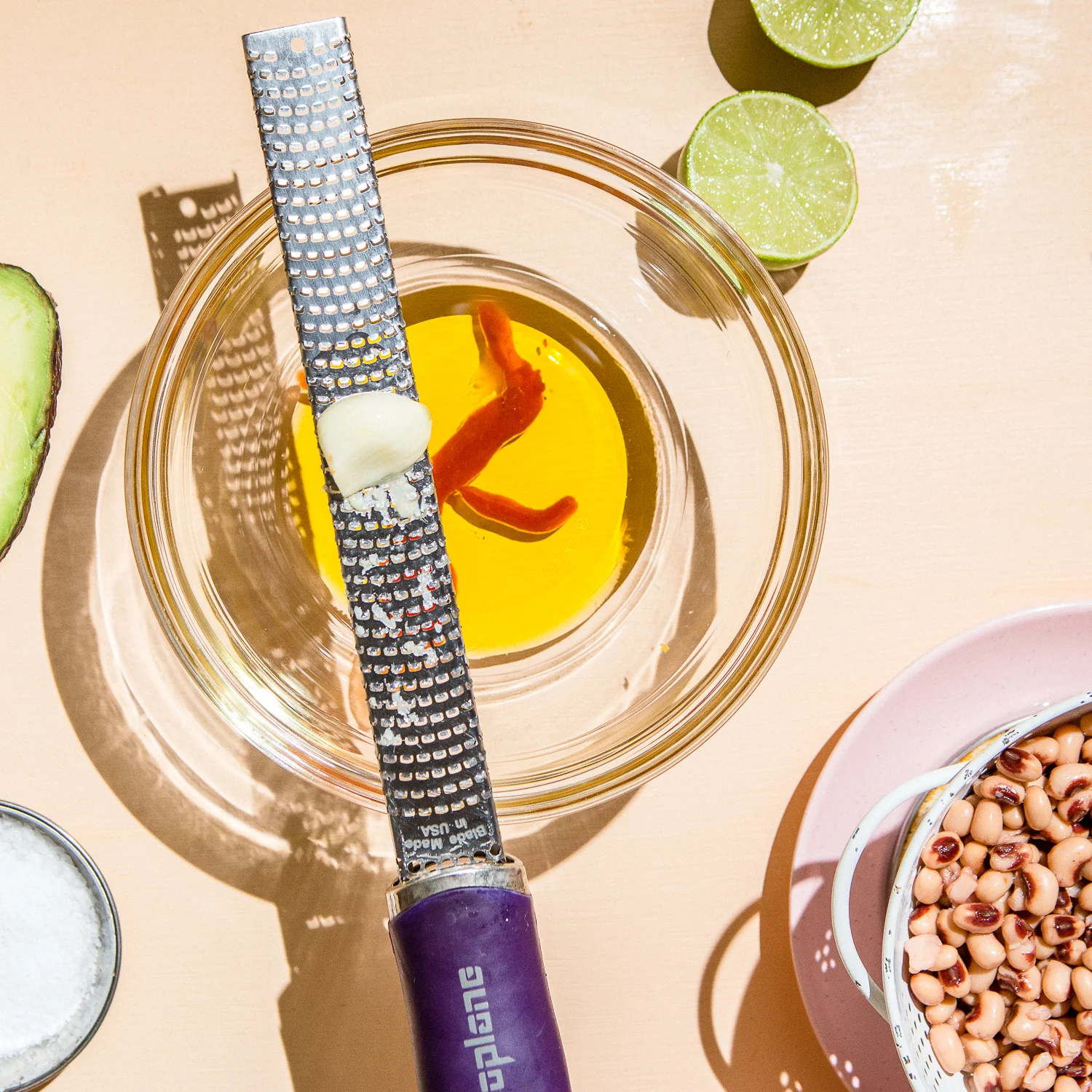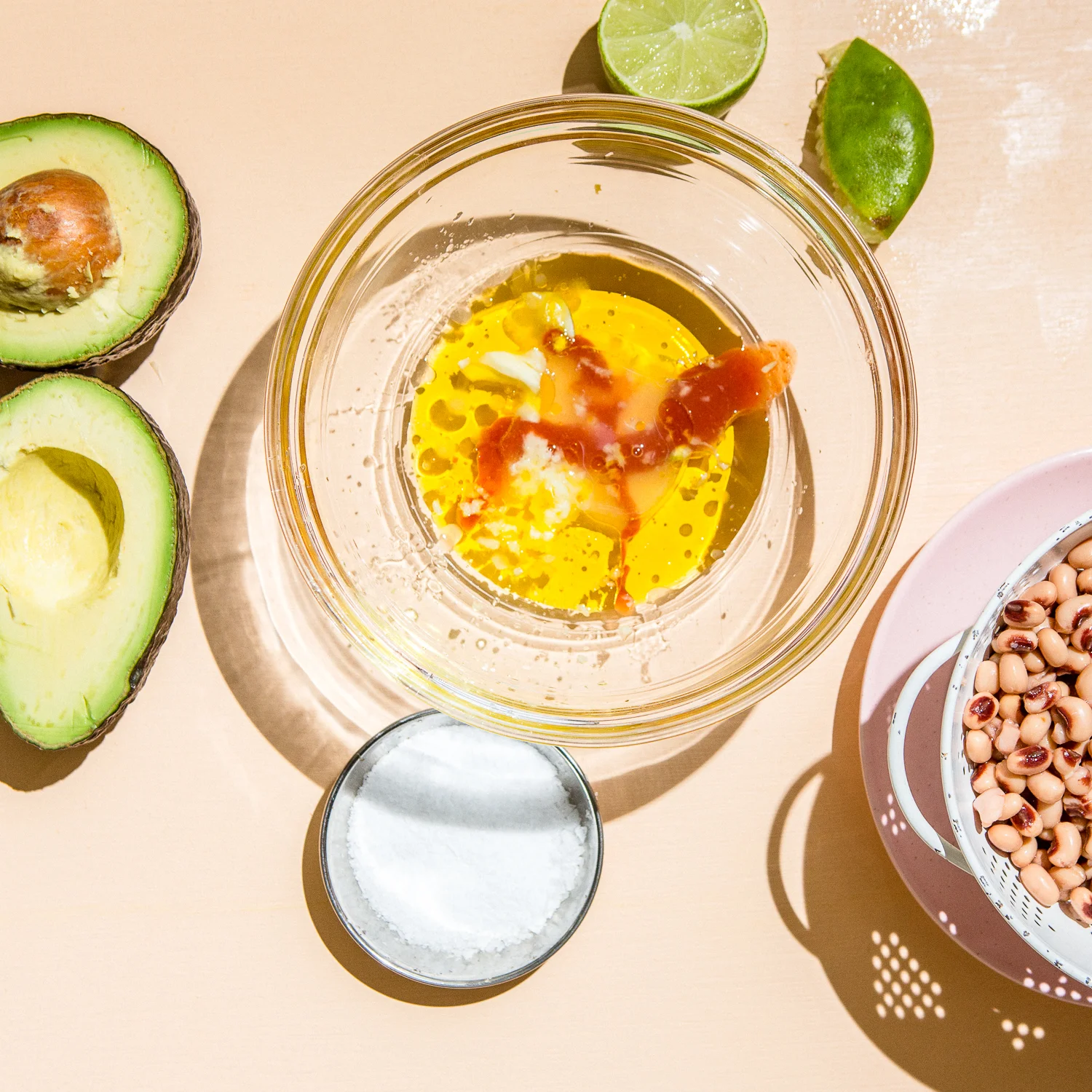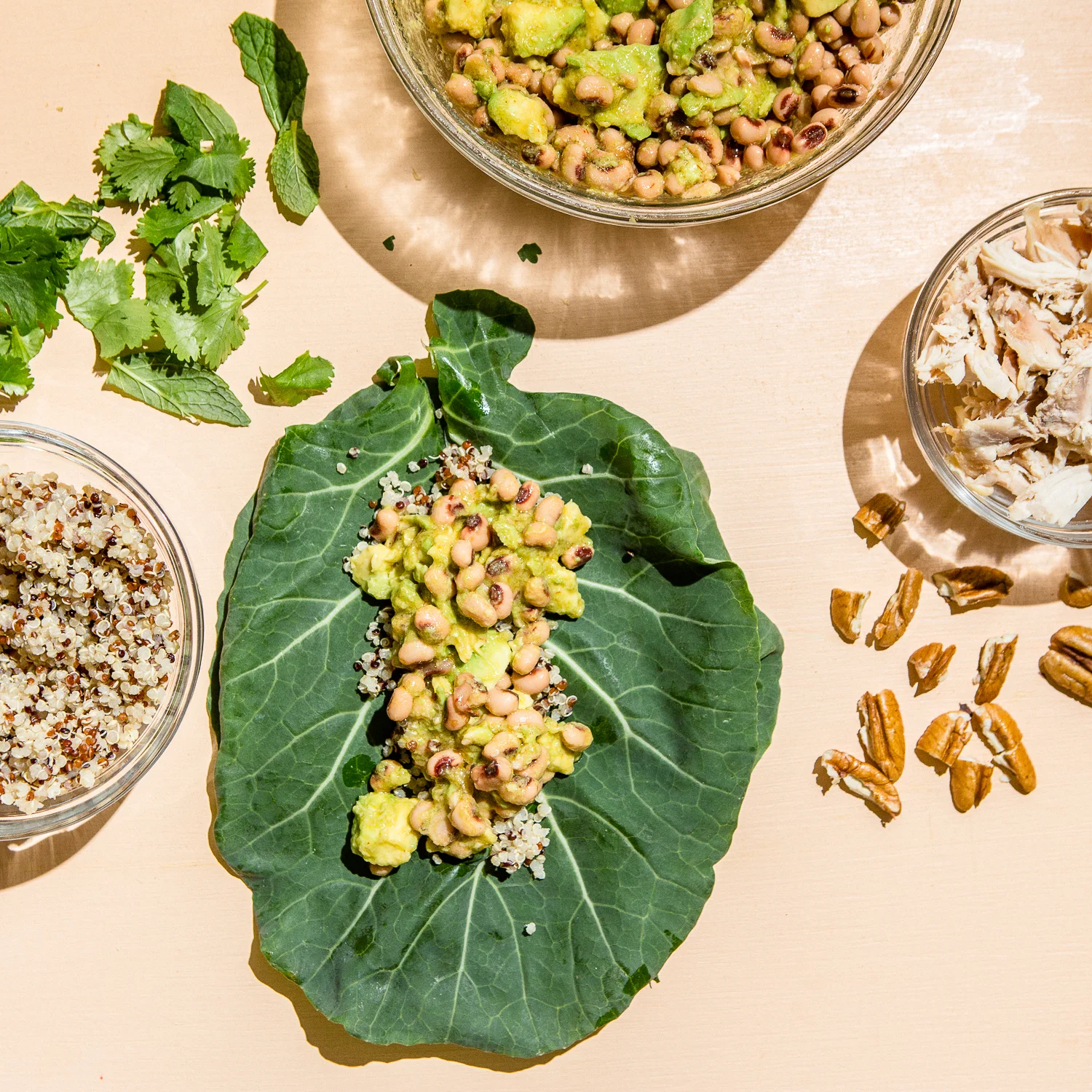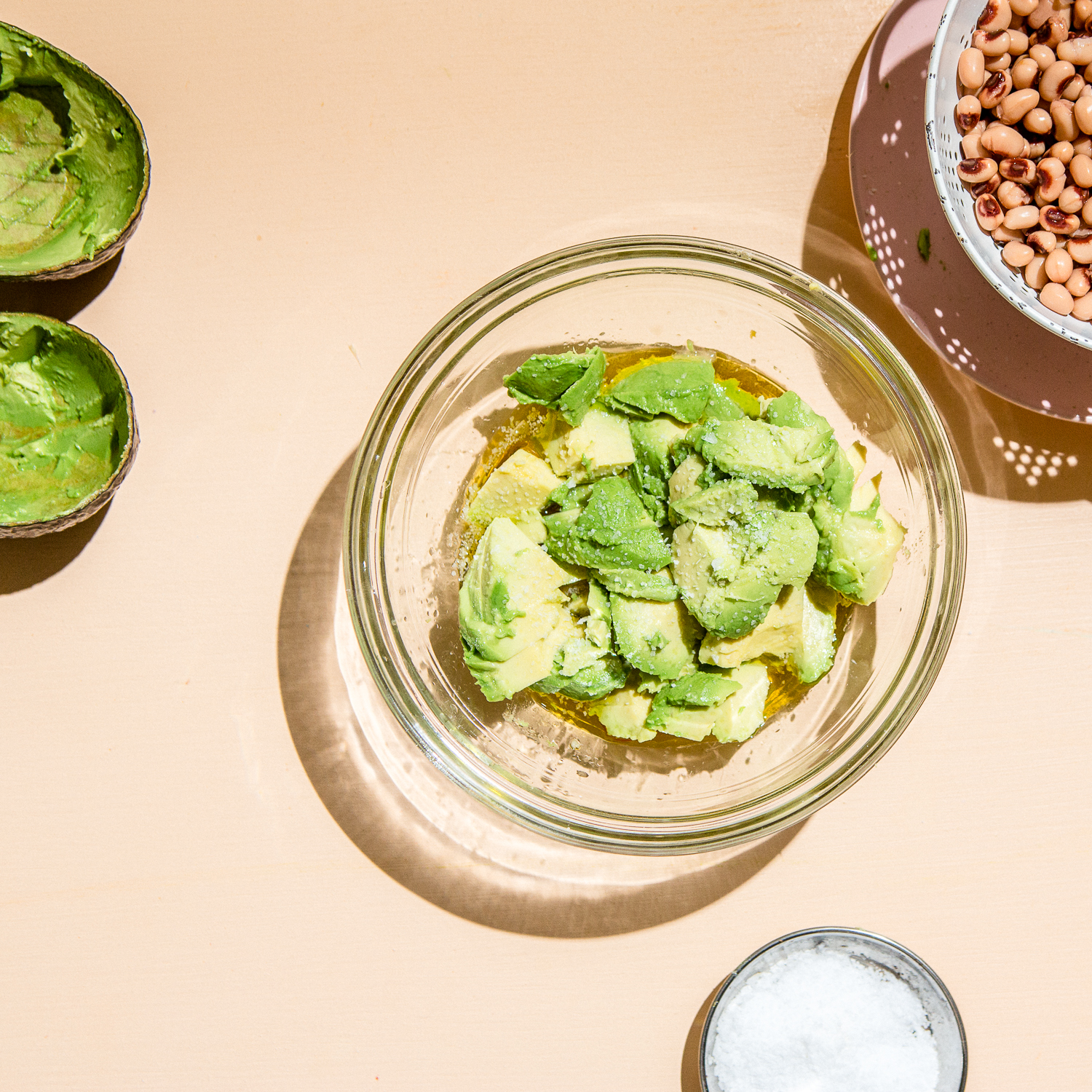Lucky Collard Wraps with Black-eyed Peas
Making stewed black-eyed peas and collard greens for New Year’s this year slipped my mind until midday on the first of January when I realized we had no “good luck food” on the docket for the day. Too hungry to wait for a pot of beans to cook, I grabbed a can of Black-eyed peas from HEB and made a black-eyed pea avocado salsa to stuff into fresh collard wraps with quinoa, chicken, herbs and pecans.
So this year we skirted the traditional beans and greens, but still managed to fit black-eyed peas and collards into a fast, good luck meal.
After reading through a few articles that highlight the origins of foods traditionally eaten on New Year’s, I found exactly when Texas, then the rest of the country caught on to the hype. I also learned a lot more about how black-eyed peas and collard greens shaped food culture and history in the early days of the South.
According to food historian and journalist Jessica B. Harris, black-eyed peas (aka cowpeas or field peas) were domesticated in West Africa 5,000 years ago. They made their way into the diets of people in virtually all parts Africa, and eventually to America in the holds of slave ships as food for the enslaved. “The peas, which were eaten by enslaved Africans and poorer whites, became one of the Carolinas’ cash crops, exported to the Caribbean colonies before the Revolutionary War.”
It is unclear where collard greens originated, but it wasn’t until Africans arrived in Jamestown, Virginia in the early 1600s that America got its first taste of the nutritious leafy green. Collards were one of a few vegetables that African-Americans were allowed to grow and harvest for their families throughout times of enslavement.
As for Texas, where I grew up eating a hearty serving of black-eyed peas and collard greens on New Year’s day, I found a great article about how a marketing ploy shifted eating Black-eyed peas and collard greens from a Southern pastime to a yearly Texas necessity, and eventually a national tradition. In 1937, Elmore Torn of the Longview-based East Texas Chamber of Commerce kicked off a marketing campaign that should inspire modern food brands and influencers everywhere to take note.
According to Bud Kennedy at the Dallas Star Telegram:
“Torn and the East Texas Chamber of Commerce sent celebrities and reporters a small can [of black-eyed peas] with a story about how peas were not only lucky, but offered a noble dish of humility every table needed.
During World War II, he sent peas to Roosevelt and British Prime Minister Winston Churchill with a letter describing the peas as an example of America’s fighting spirit: “We want to affirm our resolve to the fight for the right of freedom to live on forever.”
Growers in the East Texas town of Lindale reported that the demand for black-eyed peas had doubled and tripled. By 1943, the Dallas Morning News reported: “Black-eyed pea sales have soared … Some [grocers] say as many as 75 percent of their customers are buying them.”
So, we have Elmore Torn and the East Texas Chamber of Commerce to thank for bringing black-eyed peas to the national spotlight and creating a tradition that many people celebrate every year.
And we have African Americans to thank for teaching America to love and grow collard greens and black-eyed peas. (While I’m at it, for unwillingly serving as the the economic backbone of the South during America’s early years.)
Connecting to the origin of food that I love and enjoy on a regular basis is keeps me humble, and helps me see the world with more clarity. Who knows if foods actually bring good luck, but leaning in to the tradition sure is fun. I am looking forward to reading my new copy of High on the Hog, by Jessica B. Harris, A Culinary Journey from Africa to America, which I ordered after coming across her article in the NYT on the origin of the black-eyed pea.
If you are wondering how to make something like the lucky collard wraps we had on New Year’s, consider that term “recipe” loosely here. I make collard wraps year-round, filled with nutrient-dense meal prep staples: grains and beans, avocado, roasted chicken if I have it, nuts for crunch and fresh herbs for zing. Riff on this combo by trading grains for leftover noodles or fried rice, black-eyed peas could be swapped for white beans or black beans or chickpeas or pintos, taking or leaving an avocado, swapping chicken for another protein or leaving it out altogether since beans and grains are enough protein for a meal, alternate nuts for crushed potato chips or crispy fried shallots. Just create a filling combo that would taste good -- and be sure not to overfill your wraps. You got this!
Lucky Collard Wraps with Black-eyed Peas
Collard Wrap Filling Ingredients
2 collard leaves per person
Cooked grains
Black-eyed Pea Salsa
Leftover roast chicken, shredded
Herbs
Pecans
Spicy Lime Avocado Black Eyed Pea Salsa Ingredients
A tablespoon or so of olive oil
Juice from half a lime
Half a clove of garlic, grated
Hot sauce
Salt to taste
1 avocado, sliced into cubes
1 can of black-eyed peas
Make black-eyed pea salsa by stirring together olive oil, lime juice, garlic and hot sauce. Add avocados and sprinkle with salt, and stir into olive oil mixture. Add black-eyed peas.
Remove tough stems from collards, and place one on top of the other to cover the split in the leaves. Add a generous scoop of grains, then the black-eyed pea salsa, then the chicken, the herbs, and the pecans. That’s it!
Please consider donating to the National Black Food and Justice Alliance as a small act of reparation -- or a small token of gratitude for sharing collards and cowpeas with America. And if you’d like to know more about African American food history, buy a copy of Jessica B. Harris’s book, “High on the Hog, A Culinary Journey from Africa to America, or “The Cooking Gene”, by Michael Twitty.










